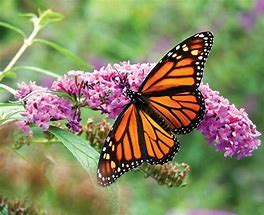|
image from Britannica. Good morning and it is frosty here this morning. The temperature is 33 degrees at 7:30 AM, but there is a blue, clear sky. Warm up to 50 but there is going to be N-NW wind up to 40 mph so that will make it cooler. We are protected with the greenhouses at the south end of town. It will be comfortable in the greenhouse for sure. Plants will like it.
Now, in addition to the work I am doing, Larry needs to cut down a couple of ash trees close to the greenhouse. We must move the camper which I use as an office in the summer. AND if you know me, I have pots and stuff around the camper to move. I must admit at the end of the day of cleaning, planting and moving stuff I am tired and muscles are a little sore. In the morning, I feel refreshed and ready to do it all over again. That is my blessing of gardening. So grateful that I can do what I can do, after having 4 joints replaced. I appreciate all that I can do. One of my favorite bushes is a butterfly bush. It is hard for this bush to come back every year even thought it says zone 5 hardy. It isn't that expensive; it grows quickly so if you have to plant every year as an annual it is ok. Planting, Growing, and Pruning Butterfly Bushes Catherine Boeckmann The butterfly bush (Buddleia davidii) is a fast-growing shrub with masses of showy, fragrant flowers that attract pollinators. Planted in spring or fall before frost, this perennial will bloom from summer through autumn. Learn how to grow a butterfly bush (and learn if you should plant a butterfly bush). About Butterfly Bushes Also called “summer lilacs,” Buddleia are hardy to Zone 5 and remain evergreen from Zone 8 south. Growing 5 to 10 feet tall, this large, arching shrub produces an abundance of flowers—long, spiked trusses—in mainly purple and pink colors. The shrub grows well in perennial gardens or as a shrub border, and the flowers are good for cutting. Don’t prune at the wrong time. Butterfly bush growth appears on new wood, so pruning should wait until the new wood is ready to grow in spring. Also, be patient with this shrub as it may not leaf out in the spring until after other perennials. Note: The butterfly bush does provide adult butterflies with nectar similar to that of many flowers. However, it is not a “host plant” for butterfly larvae; if you want the butterflies to stay, be sure to add native host plants such as milkweed, aster, and dill. Caring for Butterfly Bushes Water freely when in growth and sparingly otherwise. In the summer, water if rainfall is less than 1 inch per week. Avoid fertilizing butterfly bush; too much fertility promotes leaf growth over flower production. Remove spent flower spikes to encourage new shoots and flower buds. In addition, it is important to deadhead the flowers just as they start to wither so that this invasive plant doesn’t spread volunteer seeds. Deadheading of this invasive is now required in many states. Each spring, apply a thin layer of compost, then 2 to 4 inches of mulch to retain moisture and control weeds. In cold, Northern climates, spread mulch up to 6 inches deep around the trunk to nurture it through the winter. Buddleias are very late to break dormancy, so don’t be in a hurry to assess winter damage. The bush should bloom abundantly even in its first year. In warmer climates, the bushes will grow into trees and develop rugged trunks that peel; peeling is normal. In the northern limit of their range, they behave as herbaceous perennials, dying back to the root in cold winters. Taken from https://www.almanac.com/plant/butterfly-bush Till next time this is Becky Litterer, Becky’s Greenhouse, Dougherty Iowa beckmall@netins.net 641-794-3337 cell 641-903-9365
0 Comments
Leave a Reply. |
AuthorHi! My name is Becky and I am a Master Gardener. I own Becky's Greenhouse in Dougherty, Iowa. Archives
March 2024
Categories |
|


 RSS Feed
RSS Feed
